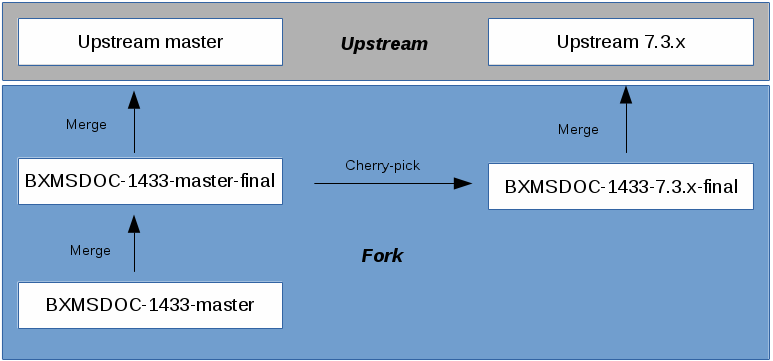
- #Git cherry pick commit sha full#
- #Git cherry pick commit sha code#
- #Git cherry pick commit sha series#
Create a branch called feature and switch to it. Make an initial commit with the empty file, and check the log. Create one empty file inside the working tree called cherry-picking.ext. We'll initialize a new repo called cherrypicker, and take the following steps: Now that you have a basic understanding of Git cherry pick, let's create an example repo and put it into practice. It's also important to note that if commitA needs to be included, we can add the ^ character in front of the commit in question, like so: $ git cherry-pick commitA^.commitB In this example, commitA must be older than commitB, or the command will fail. If you want to git cherry pick a range of commits, use the following syntax: $ git cherry-pick. Git Cherry Pick a Range of CommitsĬherry picking is an effective way of referencing a range of commits as well, which was introduced in Git version 1.7.2. We simply include each commit one after the other, separated by a space. In some cases, you might want to use the command git cherry-pick to pick multiple individual commits using a single command.Īchieving this is simple with the following syntax: $ git cherry-pick This syntax allows you to git cherry pick commit, which represents the commit to apply to the current HEAD. To do this, follow this syntax: $ git cherry-pick The most common use case of the cherry pick Git command is referencing a single commit and applying it to another branch. Git cherry pick gives you the option to surgically apply the changes made by commits, one at a time, from one branch to another. If you need only a small number of commits from one branch applied to your current branch, you can leverage the git cherry-pick command. Rather than applying all commits following a branch's divergence, such as with git merge, we can target only a specific commit or set of commits. Git cherry pick is a command for applying the changes made by specific commits in another branch to the current HEAD. Git cherry pick is a powerful tool for applying commits from another branch to the current branch. This is where the ability to cherry pick Git comes in handy. #Git cherry pick commit sha full#
However, sometimes you might just want to pick one or more commits from one branch to another without doing a full merge. This workflow leads to the eventual necessity of merging some, or all, of one branch into another. We have the option to diverge from the main branch, or any branch, as often as we like by creating a new branch.
#Git cherry pick commit sha series#
Like other version control systems, Git allows a developer to store a series of commits within branches.

Git allows you to track all of the changes you make on your project using snapshots called commits.
#Git cherry pick commit sha code#
Git is a popular version control system (VCS) often used to collaborate on a distributed code base. Does Git Cherry Pick Create a New Commit?.Where the entries prefixed with '+' are the candidates for future-cherry picking. However, TIL about git cherry: > git cherry stable master Then, I'd like to be able to see what commits are candidates for future cherry-picking on master, ideally using git log, but it doesn't really answer my question: > git log stable.master -pretty=oneline -no-mergesĠ1550adab8993ceb1eec7bbc7a0e3de3550d63fc commit 3Ĩa3ea27aa50c887b603296bb9d4a36ccbfa35311 commit 2 # cherry-pick just one of those commits to stable However, if I just cherry-pick, git treats them as two commits and thus the 'git log' command doesn't help.

I want to cherry-pick a number of those commits to stable, and then be able to use git log -merges-only stable.master to see what's left. Background: I have two branches, master and stable, with many commits on master that aren't on stable.






 0 kommentar(er)
0 kommentar(er)
